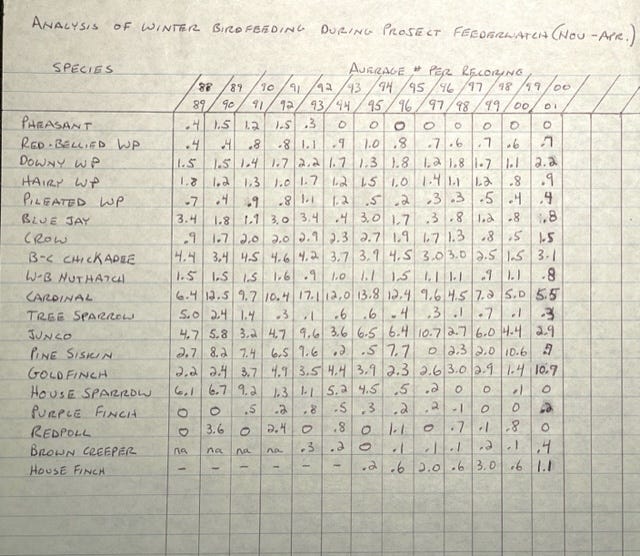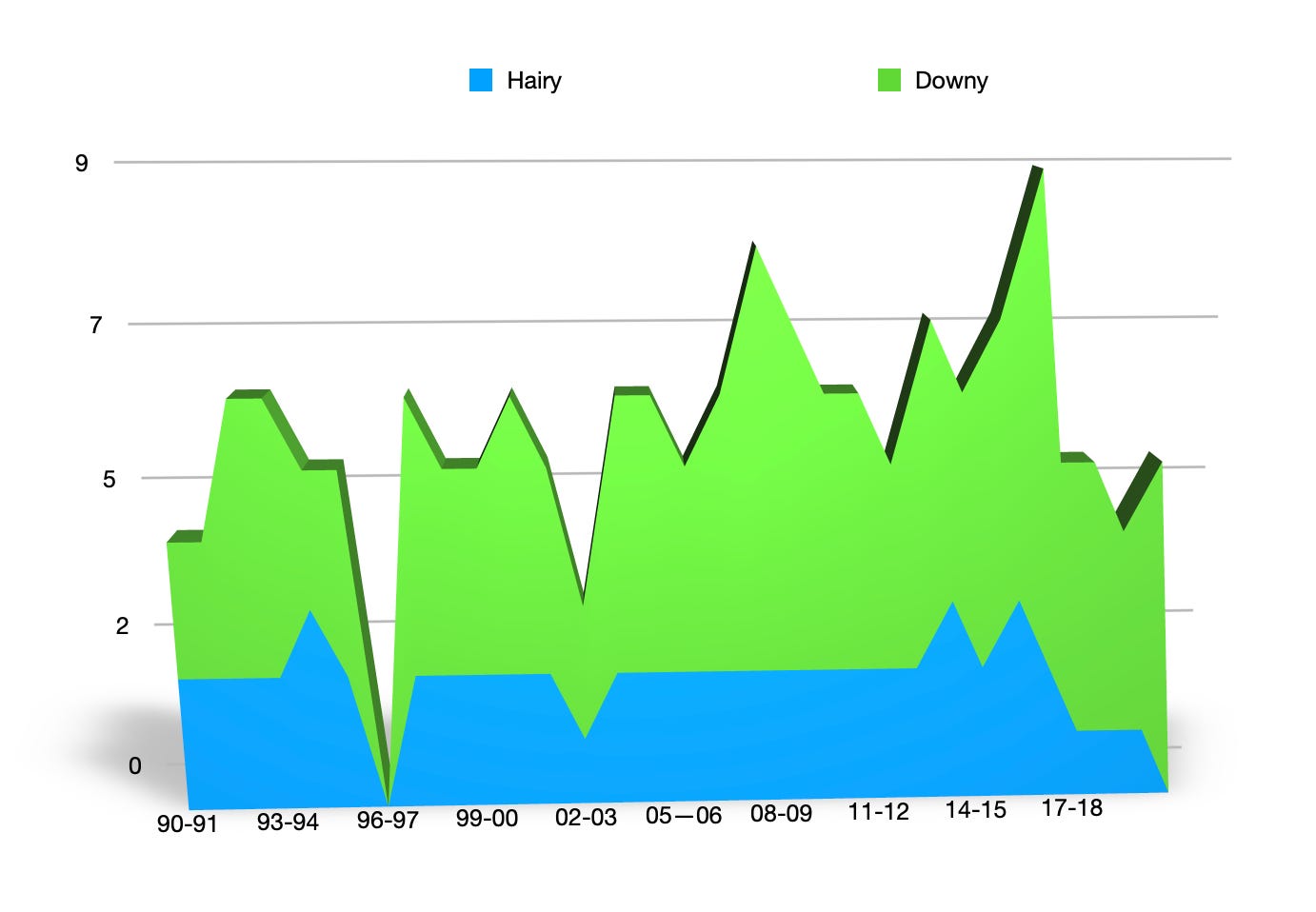Helping Science
Since the winter of 1988-89, I have annually participated in Project FeederWatch at my home. About every two weeks between November and April, I take a controlled sampling of the birds that visit my feeders over a two-day period. So every winter I submit 10 observations of the birds that visit my feeders giving me and Project FeederWatch a snapshot of the the bird activity in my backyard.
When I started over 30 years ago, the data input process required me to mail in my tally forms. The personal computer and internet were not an item. There was not instant feedback or analysis like what can easily be done today on the Project’s website or with the mobile app. I sent in my data knowing I was helping science and did not expect anything to come back to me in return. I loved birds and feeding birds, so that was enough satisfaction for me. Well ten years went by and I started to get a little curious as to what my data was showing me. FeederWatch was not quite computerized yet so one winter day I compiled the data that I had saved and created by hand a graph of my observations to date. Not sure I learned very much by this exercise although it felt oddly satisfying like the relief one has when finishing a science report in school.
There are a couple of things that do stand out from those early years. One is the decline in pheasants in my backyard. I easily created a new chart - thanks to today’s technology - with the pheasant record contrasting with my now abundance of turkeys at the feeder.
I think there are a couple reasons for this - first my area has lost the open fields that supported the pheasants. Our area fields have become developed - even a two-acre lot subdivision will be hard pressed to support any pheasants. But not the case for turkeys, they seem to thrive in our suburbia and cities once they were reintroduced back in my area in 1992.
Another standout, the house sparrow declined at my count site to the point where I have not counted one since 2004. Data from FeederWatch is helping document that this decline is actually happening nation-wide.
Lastly I have been noticing how many downy woodpeckers I seem to have recently. In my early days it appeared looking at the average number seen that the two species were about the same. When looking at the highest number seem all at one time, it is apparent that the downies are much more numerous than the hairy species.
If this is something that interests you, it is not too late this season to sign up to do your own observations on Project FeederWatch. Here is what you receive when signing up:
• Tools to track and learn about your birds on our website or mobile app
• The year-end summary, Winter Bird Highlights
• A double-sided poster of eastern and western common feeder birds (Free upon request)
• A full-color calendar (Free upon request)
• Digital access to the Cornell Lab’s Living Bird magazine (U.S. participants)
Here is the link to sign up: Project FeederWatch




